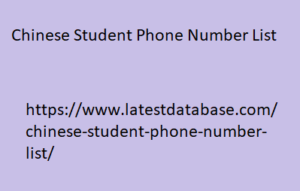|
|
Best Practices for Title Tag and Heading Optimization: Use a Keyword-First Approach: Place keywords first in your title tag, as uninterrupted by stop-words as possible. Keep it Simple: Title tags should be concise to ensure the entire tag is displayed on the SERPs. Same Keyword, Different Phrasing: Use the same keyword in your title tag and heading 1. However, use different phrasing or wording for each. Insert Related Keywords:
Do this for your heading 2, 3, and so on, where it makes sense. Avoid Duplicates: Use different title tags and headings for every unique page. 4. Meta Tags Enhancement Meta tags, such as the meta description, serve as a brief pitch to users on search engine Chinese Student Phone Number List results pages. Other meta tags, like your image alt text and links, provide important context to both the user and crawlbot. Tips for Enhanced Meta Tags: Compelling Copy: Write title tags and meta descriptions that accurately summarize the page content and entice clicks. Keyword Usage: Try to insert target keywords and/or related keywords effectively in your meta descriptions, and within the limit. Uniqueness: Each page should have unique meta tags.

Be Descriptive: but should also adequately describe what is seen on the image. Add internal and external links: Semantic search means Google can use the links in your pages to gain a better understanding of its content. Always add relevant internal links, and only include external links from trusted websites. Use Noindex Robots Meta Tag: Add this to prevent any pages with thin content, or pages with little value and no intent from appearing in the SERPs.
|
|